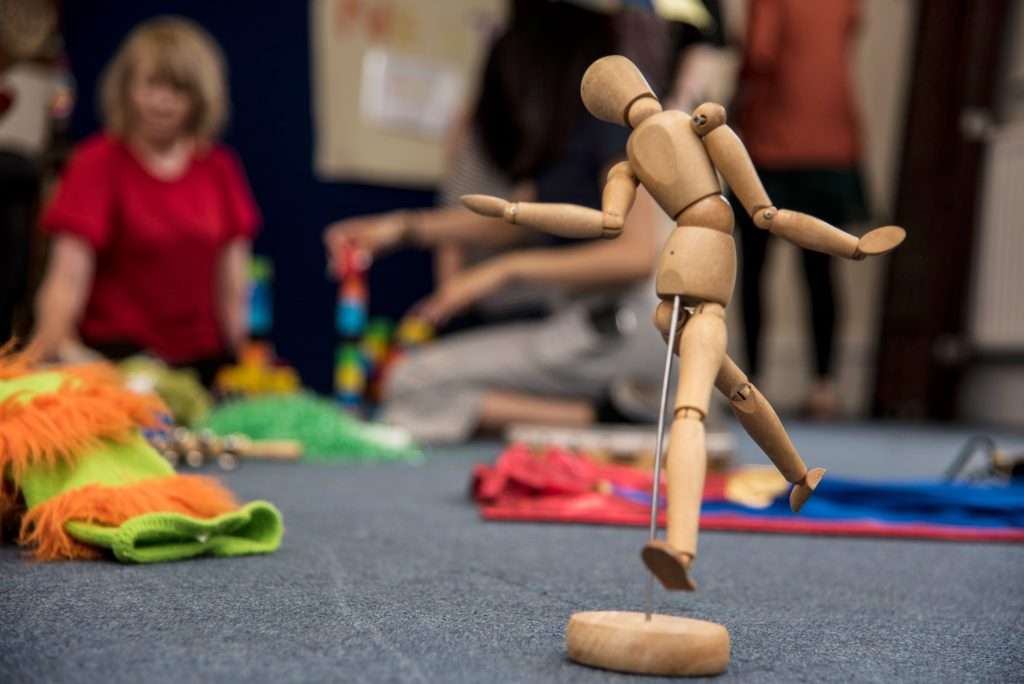Richard, an individual with a learning disability, began displaying new, anxious behaviour within the creative wellbeing group he attended at Inspirative Arts. This included repetitive behaviour, leaving the room a lot, difficulties concentrating and constantly worrying about being late. The care home also noticed this behaviour at home and in the community. They confirmed, along with a medical doctor, that they were also of the opinion that the behaviour was anxiety based.
Several factors were examined:
- Medical factors: Anxiolytic medication was tried but a higher dose made Richard feel sleepy and disengaged and a lower dose saw Richard become more anxious. It seemed difficult to get the balance right.
- Historical factors: Care home believed that Richard may have been punished in the past for being late, as others he lived with previously showed similar anxieties
- Organisational factors: Richard had been in a group that had undergone a lot of changes, which may have caused anxiety
This anxiety was disruptive for the group and prevented Richard from meeting his outcomes and goals relating to happiness and wellbeing

Plan of Action
Plan of Action (Dance/Movement Specialism)
Several changes in the wellbeing group, in relation to the dance/movement specialism, were enacted to support Richard.
- Dance Movement was proposed to minimise repetitive behaviours by engaging the body in other calm movement (Anderson-Hanley et al., 2011)
- Introduction and closing was made fast paced so that Richard didn’t have too long to think and become anxious. This also set boundaries which helped participants to feel safe, something important to creative exploration (Rogers, 2000)
- The body warm up was done all together so Richard did not feel on edge or exposed which may cause anxiety. This also minimised the risk of injury associated with dance/movement (Fish, 2002)
- Mirroring activities were done to improve empathy within group so that other members can understand Richard’s anxiety and potentially better cope with it (McGarry & Russo, 2011)
- The additional level 1 member of staff was asked to focus on Richard to offer him reassurance so that the group can concentrate, Richard could be reassured and safe, and the rest of the group could get the attention it needed
- ‘Parallel play’ (Bakeman & Brownlee, 1980) was introduced so that if being part of a group became overwhelming at anytime, Richard and his Level 1 could move away and engage in a more calm activity together while still allowing the opportunity to rejoin the group and socialise.

Results
Results
Richard’s anxiety was significantly lowered. His repetitive behaviours reduced and he had more interaction with other group members. Richard was less distracted and stayed in the group for a longer time. There was less distraction for the group and the other members were able to receive more equal attention.
Richard attended customised Creative Wellbeing Group Sessions for individuals with a learning disability and anxiety. Contact us to get more information.
All names within this piece have been changed to maintain boundaries of confidentiality.
References
Anderson-Hanley. C, Tureck. K & Schneiderman. R. L (2011) ‘Autism and Exergaming: Effects on Repetitive Behaviour and Cognition.’ Psychology Research and Behaviour Management, vol: 16(4), pp. 129-137
Bakeman. R & Brownlee. J.R (1980) ‘The Strategic use of Parallel Play: A Sequential Analysis.’ Child Development, vol. 51(3), pp. 873-878
Fish. H (2002) Warm Up [available online] [Accessed 15 February 017]
McGarry. L.M & Russo. F.A (2011) ‘Mirroring in Dance Movement Therapy: Potential Mechanisms Behind Empathy Empowerment.’ The Arts in Psychotherapy, vol. 38(4), pp. 178-184
Rogers. N (2000) The Creative Connection: Expressive Arts as Healing, London: JKP



